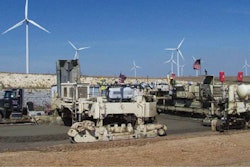A quality air coil will exhibit good “strength, durability, flexibility, memory recoil and performance in hot and cold temperatures,” say the writers behind parts manufacturer Phillips Industries’ Qwik Tech Tips monthly newsletter. A chief consideration is the material the air line is made of.
The company says a shortage of castor beans in 2002-03, the chief component in natural Nylon 11 (Polyamide 11), led to more prominence in air coils made of synthetic Nylon 12 (Polyamide 12).
Given the uptick in solar panel production of late, 12 has been in high demand, leading to more frequent use of materials including Nylon 6/6, polyurethane and Hytrel, which the company views generally as inferior for various reasons, though they all have their advantages as well.
Check out the March and April editions of their newsletter in the archive available here for the full discussion. They offered these considerations in determining quality (more detailed in the April newsletter) as well:
**When “clapping” the coils together, a dense, low-pitched sound indicates better quality than a higher pitch.
**Air coils utilizing type B layering with a tighter “diamond pattern” braid offer better reinforcement and less kinking.
**Air coils with three- to four-piece compression fittings and/or barbed fittings offer easier connection and added protection.










